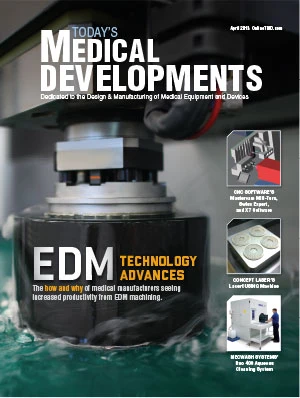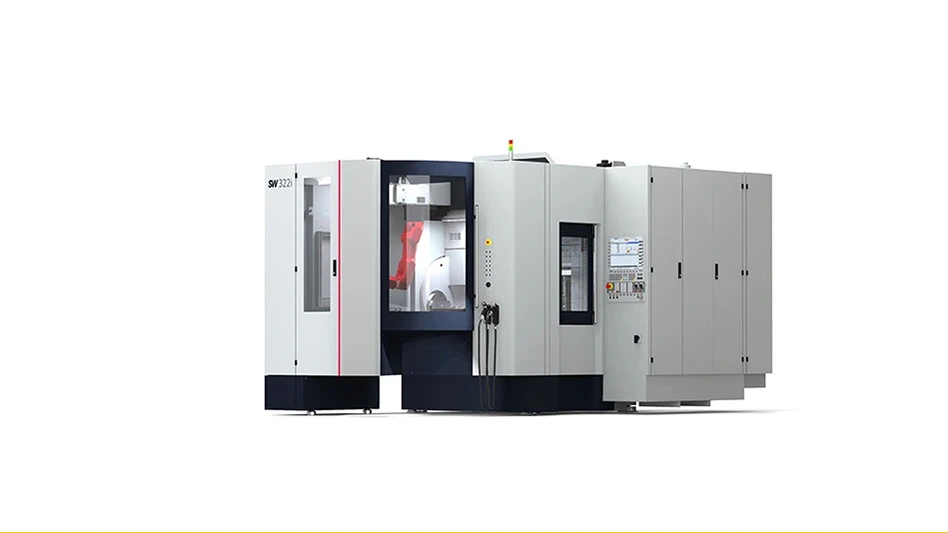 It seems unlikely that the technology used to adjust the position of satellites in space might be used to power a surgical tool, but when Professor of Plasma Physics Nikolay Suslov first explored the effects of thermal plasma on tissue in the mid-1990s he saw the benefits that this aerospace technology might bring to surgery. Scaling down this technology, and meeting the challenges of designing and manufacturing a surgical handpiece for use in today’s minimal access surgery, would prove to be a long journey. However, the end result, the PlasmaJet system, has brought some unique advantages for the surgeon over conventional electrosurgery approaches, allowing the safe removal of tissue with simultaneous coagulation and minimal damage to underlying structures.
It seems unlikely that the technology used to adjust the position of satellites in space might be used to power a surgical tool, but when Professor of Plasma Physics Nikolay Suslov first explored the effects of thermal plasma on tissue in the mid-1990s he saw the benefits that this aerospace technology might bring to surgery. Scaling down this technology, and meeting the challenges of designing and manufacturing a surgical handpiece for use in today’s minimal access surgery, would prove to be a long journey. However, the end result, the PlasmaJet system, has brought some unique advantages for the surgeon over conventional electrosurgery approaches, allowing the safe removal of tissue with simultaneous coagulation and minimal damage to underlying structures.
Surgeons today rely upon powered devices to achieve relatively bloodless surgery. The most widely used technologies are based on electrosurgery, with the CO2 laser together with ultrasonic and powered vessel sealing devices completing the armamentarium of the laparoscopic surgeon. However, each of these technologies has limitations and there remains a requirement for an improved technology that can cut, ablate, and coagulate tissue precisely and with minimal damage to surrounding and underlying structures. Many attempts have been made to improve electrosurgery, with developments such as the argon beam coagulator and fluid-coupled electrosurgery systems, but all of these approaches involve the use of high voltages and the passage of an electrical current through the tissue with resulting damage to structures adjacent to or even far from the operating site. The emergence of thermal plasma technology, which involves no external electrical current, offers a promising new approach.
 Design and Engineering Challenge
Design and Engineering Challenge
Plasma is often described as the fourth state of matter after solid, liquid, and gas. When energy is applied to a gas, it ionizes to become high-energy plasma. Called cold plasma, it is produced relatively simply, using a glow discharge principle, but it lacks the energy required to be of surgical use. However, higher energy thermal plasma, such as that produced in aerospace applications, has sufficient power density. Plasma is inherently unstable, and thermal plasma readily gives up its energy in three potentially useful forms – as light that can illuminate a surgical field, as heat for use to coagulate a tissue surface, and as kinetic energy that can be harnessed to cut and ablate tissue. However, two major challenges had to be overcome before the aerospace technology could be used in surgery. First, the plasma-generating device required minimization; second, it needed a design that would prevent electrode materials from contaminating the plasma.
Design for Surgical Use
The research conducted by Professor Nikolay Suslov – now chief technology officer at Plasma Surgical Inc. – led to the design of a patented multi-electrode array used in the PlasmaJet system. It is in this system that thermal plasma is generated in a small concentrated area near the tip of the surgical handpiece, but kept as distant from the electrodes as possible to ensure that there is no risk of contamination by the metal in the electrodes used. The first prototype handpiece was relatively large and had a diameter of about 2.5cm. However, in subsequent iterations, the diameter of the surgical handpiece was reduced to 10mm, and then 5mm, and then lengthened to create a device suitable for use in minimal access surgery. Achieving this required the use of many micro-machined and molded components, as the electrode elements became progressively smaller. As handpieces were developed that were capable of cutting tissue, they incorporated a supersonic nozzle design that accelerated the plasma to more than twice the speed of sound.
 The surgical handpiece used to generate thermal plasma needs to be kept cool, both to remove heat generated by the plasma source, to prevent electrode damage, and to maintain the external surface of the handpiece cold so that it can be safely used by the surgeon to manipulate tissue between applications of plasma. To achieve this, the handpiece incorporates an integral pathway for circulating coolant around its active plasma generating electrode array and tip. A coolant reservoir, circulating pump, and a Peltier cooling system maintain the surface of the tip and shaft of the handpiece at room temperature.
The surgical handpiece used to generate thermal plasma needs to be kept cool, both to remove heat generated by the plasma source, to prevent electrode damage, and to maintain the external surface of the handpiece cold so that it can be safely used by the surgeon to manipulate tissue between applications of plasma. To achieve this, the handpiece incorporates an integral pathway for circulating coolant around its active plasma generating electrode array and tip. A coolant reservoir, circulating pump, and a Peltier cooling system maintain the surface of the tip and shaft of the handpiece at room temperature.
The production of thermal plasma requires precise control of gas flow, and the design of the PlasmaJet console would not have been possible without incorporating a mass flow controller, ensuring that the appropriate gas flow is available to start the plasma. The controller also maintains an appropriate flow that can be adjusted to a precise level to achieve the desired surgical effect. While ignition of the plasma requires a transient high voltage, the PlasmaJet system does not use RF electrosurgery. Instead, it is maintained by a DC power supply set at around 30V. A subcontractor in the United Kingdom designed the power supply, the control electronics used to generate the plasma, and the user interface of the PlasmaJet console.
Successful products for today’s operating room need good industrial design. Plasma Surgical invested in the services of two subcontractors to produce an ergonomic and attractive design for both the surgical handpiece and the console with its associated service module. This includes the design of the graphics for the color screen display and user controls to ensure that the user interface is simple to use.
 “Operating Room nurses love the user interface of the PlasmaJet system,” says Ian Mawhinney, VP of sales and marketing, Plasma Surgical. “They find the system easy and quick to set up, and if they need help at any time the appropriate instructions appear with illustrations on the screen.”
“Operating Room nurses love the user interface of the PlasmaJet system,” says Ian Mawhinney, VP of sales and marketing, Plasma Surgical. “They find the system easy and quick to set up, and if they need help at any time the appropriate instructions appear with illustrations on the screen.”
Meeting the Manufacturing Challenge
Plasma Surgical – the company formed to develop and manufacture the PlasmaJet system – started in the United Kingdom and Sweden, and the early handpieces were manufactured in a prototype production facility in Gothenburg, Sweden.
“Scaling up the production of handpieces was a significant challenge for such a complex construction in a single use disposable,” says Mike Dilworth, VP of manufacturing, Plasma Surgical.
Dilworth was recruited to take charge of this responsibility, a task made more challenging by the decision to relocate manufacturing of handpieces to the United States. A small team of production staff from the United States worked in Gothenburg before moving the production process to a purpose-built cleanroom facility in Roswell, Ga., which is now the company’s headquarters. The assembly of the single use disposable handpieces for the PlasmaJet system currently involves precision assembly with many steps being undertaken by hand, but there are plans to automate much of the fine assembly and test work.
 Applications in Surgery
Applications in Surgery
Plasma Surgical obtained FDA 510(k) approval to market the PlasmaJet system first as a coagulation device and more recently for the cutting and removal of soft tissue by vaporization. The device is also CE marked for Europe and licensed for distribution in Canada.
With volume production now in place, Plasma Surgical is now entering the commercial phase of its release of the PlasmaJet system in the United States and Europe. The technology has wide potential in most branches of surgery and the company has ambitious plans for on-going development to realize the full potential of this aerospace technology in the surgical market.
Plasma Surgical Inc.
Roswell, Ga.
www.plasmasurgical.com
Watch PlasmaJet demonstrations at http://www.plasmasurgical.com/resource.html.

Explore the April 2013 Issue
Check out more from this issue and find your next story to read.
Latest from Today's Medical Developments
- Tariffs threaten small business growth, increase costs across industries
- Feed your brain on your lunch break at our upcoming Lunch + Learn!
- Robotics action plan for Europe
- Maximize your First Article Inspection efficiency and accuracy
- UPM Additive rebrands to UPM Advanced
- Master Bond’s LED415DC90Med dual-curable adhesive
- Minalex celebrates 60 years of excellence in miniature aluminum extrusions
- Tormach’s Chip Conveyor Kit for the 1500MX CNC Mill





